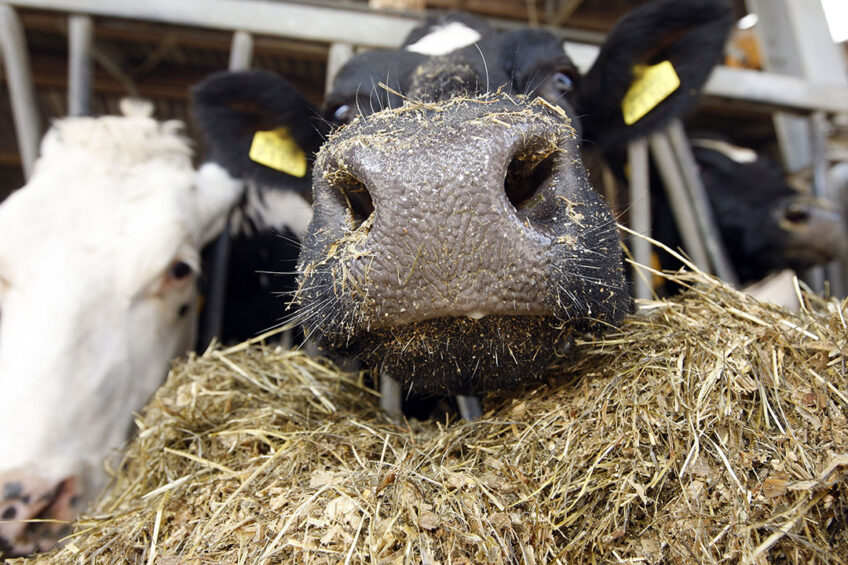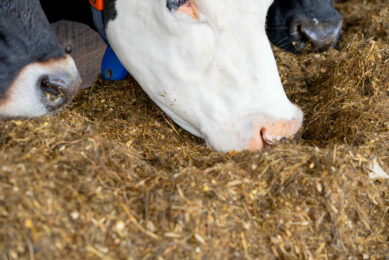Feeding dairy cows for performance

The ability of a cow to remain healthy depends on many factors, not least its immune system.
Competent immune function is critical to dairy cow performance and welfare – and nutrition plays a vital role in maintaining a strong immune system. The immune system is a biological defence mechanism made up of various tissues, cells and chemicals that aim to prevent disease and ill health caused by infections. The key is for the immune system to be able to recognise the difference between disease-causing organisms and normal cow tissues.

The first part of the immune system is a physical one, in the form of skin. Cuts or abrasions to the skin can allow entry of pathogens into the body that subsequently stimulate the next step in the defence process – the innate, or non-specific, response, which causes inflammation. Following the initial, inflammatory phase, a second, more specific, process occurs. Antibodies are produced as part of this response; this is the basis of vaccination. This system also possesses ‘memory’ whereby memory cells from a previous infection remain in circulation. If the same pathogen is encountered for a second time, the response is more rapid and stronger. The failure of any stage of defence leaves the animal at higher risk of infection and/or disease.
Feeding and immune function
Numerous factors influence immune function, including genetics, hormones, oxidative stress and nutrition. However, one of the most influential factors regarding immune function is nutrition, and research demonstrates the adverse effect of malnutrition on immune function in mammals.
The transition period poses the greatest risk to immune function due to the large amount of physiological stress on the cow. During the close-up period, cows can experience suppressed immune function (Sordillo et al., 2009). Both deficiencies in and excesses of various nutrients can result in impaired immune function, so careful attention must be paid to transition cow diets.
Minimising the negative energy balance (NEB) post-calving is an important goal for any nutritional plan. Animals with an NEB tend to have elevated levels of compounds associated with an increase in inflammatory conditions (Sodillio et al., 2009). Mobilisation of body fat to provide additional energy has detrimental effects on metabolism, as well as on the immune system (Ingvartsen and Moyes, 2012).
Minimising NEB requires a healthy and efficient rumen, which can be encouraged by feeding a balanced ration using good-quality ingredients. As the calf grows in size, dry matter intake (DMI) decreases, meaning adjustments are required in nutrient density of the ration. Fat is often used to increase energy density, but it must not be at the expense of ration balance. Adequate dietary-soluble carbohydrates, as well as avoidance of excess dietary protein, should be taken into account when formulating rations for these animals. That said, the cow should still be provided with optimal levels of forage to minimise the risk of digestive disturbances. Feed additives, such as live yeast, have been shown to improve rumen function (Desnoyers et al., 2009).
Dietary inclusion of live yeast, such as Yea-Sacc® (Alltech Inc.), can rapidly promote an anaerobic environment, helping desirable, fibre-digesting microbes to proliferate and efficiently colonise feed particles, resulting in lower rumen lactate concentrations and a higher overall pH. Yea-Sacc is a proprietary strain of the live yeast Saccharomyces cerevisiae, with just this specific rumen activity, and its benefits are supported by a plethora of controlled animal performance data (Table 1).
It works by metabolising excess oxygen entering the rumen, present via feed particles, thus helping to maintain an anaerobic rumen environment.
There is also stimulation of lactate-utilising bacteria, which helps to reduce the acid load in the rumen and avoid significant drops in rumen pH that are detrimental to the sensitive cellulolytic bacteria. These cellulolytic bacteria then thrive and generate volatile fatty acids (VFA), which are subsequently absorbed through the wall. This creates a more efficient and complete digestion of the ration, particularly the fibre portion, leading to improved feed efficiency (Figure 1).
Figure 1 – Effect of dietary inclusion of live yeast (Yea-Sacc, Alltech Inc.) on feed efficiency (kg FECM/kg DMI) in Holstein dairy cows (adapted from Steingass et al., 2007).

Promotion of cellulolytic bacteria results in a shift in VFA production towards acetate, which drives milk fat production. As well as scavenging oxygen, Yea-Sacc produces small peptides and co-factors that stimulate bacterial growth. There is much variation in the range of stimulatory compounds or metabolites generated by different yeast strains (Kondo et al., 2014), and this contributes to some of the varied responses across individual strains.
This overall stimulatory effect promotes utilisation and digestion of nutrients, driving greater intake, in which increases are often seen following dietary inclusion of yeast.
Optimising selenium status
Oxidative stress has also been cited as a negative influence on immune function. It is well accepted that selenium (Se) is a crucial antioxidant that works in tandem with vitamin E and has a significant impact on oxidative stress. Se-containing enzymes, such as glutathione peroxidase, scavenge compounds that enhance oxidative stress and also have a vitamin E–sparing effect. Levels of selenoenzymes are known to decrease during the very late dry period but rapidly increase again in early lactation. Selenium inadequacy is linked with adverse immune function effects, such as impaired antibody production. Adequate selenium status has a positive impact on the animal’s ability to resist infection, as well as on fertility parameters.
Optimising Se status in cows is essential for supporting immune function, and this refers to both amount and form of Se supplied. It is well established that organic forms of minerals generally have higher bioavailability and retention in the body compared with their inorganic counterparts. This retention in body tissues allows the animal to build a reserve of the mineral to use in times of increased physiological stress (e.g. transition). As Se cannot be chelated, selenium-enriched yeast, such as Sel-Plex®, is often used to deliver Se in an organic form.
 Selenium reduces heat stress effects
Selenium reduces heat stress effects
As temperatures rise, managing heat stress in all livestock, including dairy herds, is critical.
Positive effects have been noted with feeding an organic form of other minerals, such as zinc and copper. Zinc deficiency can significantly increase susceptibility to infections. However, an excess of zinc has also been shown to impair immune function. Zinc is also crucial for maintaining the integrity, normal function and development of the primary barrier, the skin and cells involved in the inflammatory response. Similarly, copper affects the second, more specific, response by the immune system. Thus, copper-deficient animals often show immunosuppression.
Essentially, immune function is critical to dairy cow performance, and transition animals are at greatest risk of impaired immune function. Nutrition plays a crucial role in dairy cow health, not least through direct effects on the immune system, and rations should be formulated to enhance immunity through optimal mineral supply, as well as to maximise rumen function.
References available on request.
Join 13,000+ subscribers
Subscribe to our newsletter to stay updated about all the need-to-know content in the dairy sector, two times a week.










